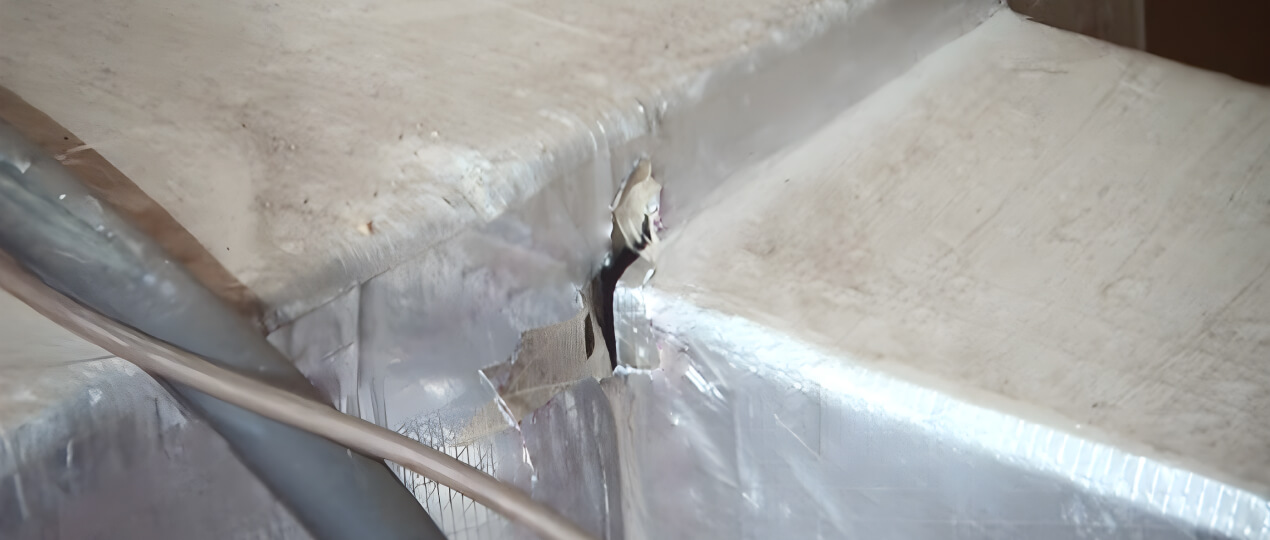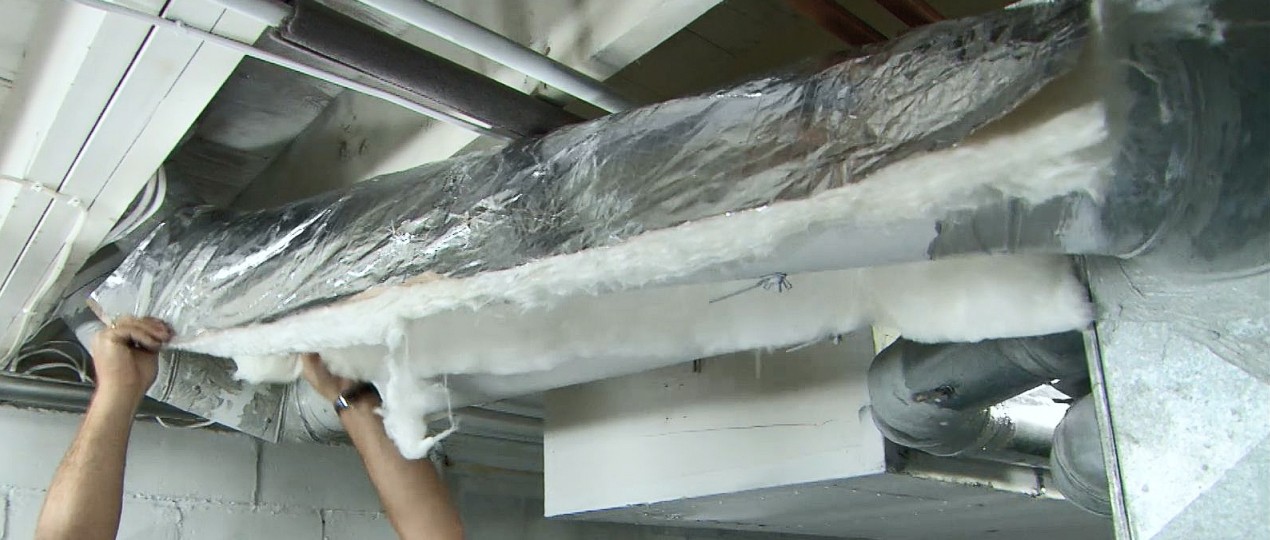
Before diving into the core aspects of how to seal ductwork, it’s crucial to understand what is at stake when your air distribution system isn’t functioning optimally. Leaks not only lead to inefficiencies in energy consumption but also compromise indoor air quality.
A well-maintained network of ducts helps maintain consistent temperatures, reduces utility costs, and keeps your living space clean and healthy. In this article, we’ll explore essential insights, highlight common causes of leaks, guide you through do-it-yourself steps, and explain when professional intervention might be best.
Why sealing leaky ductwork is essential for your home
Ensuring proper work can properly improve the comfort level inside your home. When ducts contain holes, cracks, or loose connections, conditioned air can escape before reaching the intended rooms, forcing your HVAC system to work harder. Over time, this inefficiency drives up energy bills and may accelerate wear on critical components.
Moreover, unsealed gaps often allow dust, debris, and other pollutants to enter the airflow, which can reduce indoor air quality. By sealing HVAC ductwork correctly, you optimize your heating and cooling systems, potentially extending their lifespan while fostering a healthier living environment. Beyond the comfort factor, a meticulously sealed duct system cuts down on energy losses, leading to noticeable cost savings and a reduced carbon footprint.
Common causes of ductwork leaks
There are numerous reasons why your air distribution channels might develop leaks, from aging materials to improper installation. Understanding these common causes ensures homeowners can take prompt action.
An overview of potential duct issues, all of which can contribute to escalating power bills and inconsistent airflow:
- Faulty installation and loose connections Poor initial construction or an inexperienced technician can leave gaps and loose joints. If professionals do not adhere to guidelines, it results in subpar how to check ductwork for leaks measures, permitting energy to escape and pollutants to infiltrate.
- Aging and material degradation Wear and tear over time can degrade duct materials, especially when subjected to temperature fluctuations. This age-related deterioration often leads to microcracks that spread and develop into larger leaks, compromising the efficiency of HVAC duct sealing from the inside and outside.
- External damage from vibrations Vibrations from the HVAC system can loosen connections, while rodents or pests might damage insulation layers. When these problems remain unchecked, the possibility of needing sealing steps increases, as neglected repairs worsen over the years.
By recognizing these prevalent causes, you can take proactive steps to inspect and protect your home’s air distribution network. Regular evaluations and swift fixes help secure efficient operation, reduce strain on critical components, and optimize temperature control. Ultimately, preventing leaks ensures that every dollar spent on heating or cooling benefits your living space.
What are the signs of a leaky ductwork?
Learning how to find leaks in ductwork starts with recognizing early warning signals. Noticing even minor variations in airflow or unexpected dust accumulation helps you address small problems before they escalate.
The telltale indicators that you might have leaky ducts, along with insights on why each sign matters are:
- Uneven room temperatures Rooms with inconsistent temperatures or hot and cold spots often indicate air escaping. Investigate these fluctuations, especially if adjustments to the thermostat fail to correct the imbalance, as it may be time for how to fix leaky ductwork actions.
- Unexpectedly high energy bills Higher-than-normal utility bills suggest your HVAC system is overcompensating for lost airflow. If you see a sudden or steady increase, it might be an indication that ductwork should be a priority to regain energy efficiency.
- Excessive dust buildup in your home Excess dust in living areas could signal that contaminants are being pulled into your ducts through gaps. If filters become clogged quickly, consider how to seal leaky ducts measures to block the infiltration of debris and allergens.
A vigilant eye on these early symptoms is key to minimizing structural damage and keeping utility costs in check. By acting when you spot temperature differences or rapid dust buildup, you’ll protect your HVAC system and your family’s comfort. Addressing signs promptly paves the way to long-term savings.
How to seal leaky ductwork yourself
Deciding on the best way at home often involves assessing the severity of leaks and selecting appropriate repair materials. While minor gaps can be fixed with metallic tapes or specialty mastic, extensive damage might require more advanced techniques, especially if sections are not easily accessible. Safety should always come first, so shutting down the HVAC system prior to any repair attempts is vital.
Keep in mind that while DIY solutions can be efficient for moderate leakage, you need a certain level of skill, time, and patience to ensure thorough coverage. If you’re uncertain about what to use to seal ductwork, consider starting with tapes labeled UL 181 or water-based mastic sealants. They provide lasting results when properly applied, though any sign of advanced deterioration warrants professional help.
Tools and materials you will need
Before embarking on how to seal HVAC ductwork, gather all essential tools and materials to streamline the process. Items commonly used include a flashlight for detecting hidden cracks, a sturdy ladder for reaching overhead ducts, and protective gear such as gloves and goggles. You’ll also need metal foil tape or specialized mastic, a thick paste, to form airtight connections.
Additionally, keep a brush or applicator on hand if mastic is your chosen sealant. Such gear is indispensable for tackling leaks safely and efficiently, reducing the risk of injury, and ensuring that the job is done right. Lastly, consider a protective tarp to keep floors and furniture clean, especially if ducts are situated in tight or cluttered spaces.
Step-by-step process for sealing ductwork
When you’ve familiarized yourself with how to test ductwork for leaks and gathered the appropriate supplies, it’s time to begin. Proper preparation streamlines the entire undertaking.
Steps involved, ensuring a cleaner and more reliable system for your home are:
- Inspect and mark Shut down the HVAC system, then use a flashlight to spot cracks or loose connections. Mark leaky zones with tape or a marker. This step is key to effective operation because it highlights exactly where to apply materials later.
- Clean the surface Clear away dust, debris, or old tape remnants from duct surfaces. A clean area allows sealants to adhere more effectively. Ensure thoroughness, as this stage forms the foundation for how to seal HVAC ducts without early wear or peeling.
- Apply tape or mastic Carefully press metal foil tape over smaller gaps and secure edges firmly. For larger holes, spread mastic with a brush. Both approaches form a tight, durable bond, which is integral for long-term efficiency.
- Allow to cure Let mastic dry fully before powering the HVAC back on. Once dry, the sealant effectively blocks escaping air. By following this step precisely, you accomplish sealing HVAC ducts from inside and out, ensuring fewer issues in the future.
- Re-test Power on the system and evaluate airflow. Check for missed leaks or inadequately sealed spots. This final verification cements the success of how to seal ductwork and helps guarantee your ducts remain efficient well into the future.
Proper execution of each step ensures a more reliable duct system that boosts home comfort and HVAC performance. Whether you’re an experienced DIY enthusiast or new to this territory, following these detailed instructions reduces risks. The rewards are manifold: enhanced energy efficiency, consistent airflow, and cleaner indoor environments.
When to call a professional for ductwork repair

Although many homeowners successfully tackle how to seal leaking air ducts on their own, there are instances where professional expertise is indispensable. If your ducts are nestled behind walls or spread over a complex layout, specialized tools and training might be essential. Certain older systems could contain asbestos or other hazardous materials, necessitating certified technicians who follow strict safety protocols.
Furthermore, if your attempts at how to seal ductwork leaks haven’t resolved persistent airflow issues or strange odors, calling in experts ensures a comprehensive inspection that identifies deeper structural concerns. Skilled contractors often use advanced diagnostics, like smoke pencils or pressure testing, to evaluate ducts comprehensively. Ultimately, entrusting the job to seasoned pros can minimize potential risks and guarantee a higher standard of air duct sealing.
Benefits of hiring a professional for ductwork sealing
Exploring by yourself is admirable, yet certain situations warrant specialized skill sets. Professionals come equipped with the knowledge and resources to address complex or widespread leakage.
Key advantages of hiring certified HVAC technicians to tackle the trouble so you can decide what best suits your needs include:
- Expert Assessment Technicians know how to solve the issue using top-notch tools. Their training helps them pinpoint hidden issues, ensuring no gap goes unnoticed. This level of insight drives accurate repairs and saves you from repeated fixes over time.
- Enhanced Longevity A professional approach often leads to more durable results. Proper adhesives, thorough inspections, and expert craftsmanship all combine for a final outcome that extends the lifespan of your entire HVAC setup.
- Time and Effort Savings Opting for expert help frees you from the labor-intensive process on your own. Homeowners can avoid potential missteps or do-overs, saving both time and money while ensuring top-quality results.
Overall, hiring a specialist means peace of mind, especially when your ducts are extensive or difficult to access. By leveraging professional insight, you reduce the risk of missed leaks or improperly applied sealants. In return, your home’s comfort and HVAC system performance remain strong and consistent.
Conclusion and key considerations
Mastering how to seal duct leaks empowers you to preserve energy, elevate indoor air quality, and maintain consistent room temperatures. Addressing duct issues early stops small gaps from developing into larger ruptures that strain your HVAC system. By combining knowledge and proper sealing methods, whether done personally or entrusted to professionals, you can achieve long-lasting comfort and cost efficiency.
Moreover, routine maintenance checks further minimize the risk of unexpected breakdowns. If you find the process too daunting or suspect advanced deterioration, remember that timely intervention by experts can help prevent additional repair bills in the future. For extensive or hidden leaks, the best way to seal ductwork often involves specialized diagnostics and professional-grade materials. Do not let leaky ducts undermine your indoor environment, take action to secure your comfort and financial well-being.
REFERENCES
1. Auld, G. (2004). An estimation of fan performance for leaky ventilation ducts. Tunnelling and underground space technology, 19(6), 539-549. https://www.sciencedirect.com/science/article/abs/pii/S0886779803001226
2. Leprince, V., Berthault, S., Carrié, F. R., & Hurel, N. (2023). Assessing the impact of pressure drop and leak distribution on ductwork airtightness measurements. International Journal of Ventilation, 22(2), 122-137. https://doi.org/10.1080/14733315.2021.1969743
